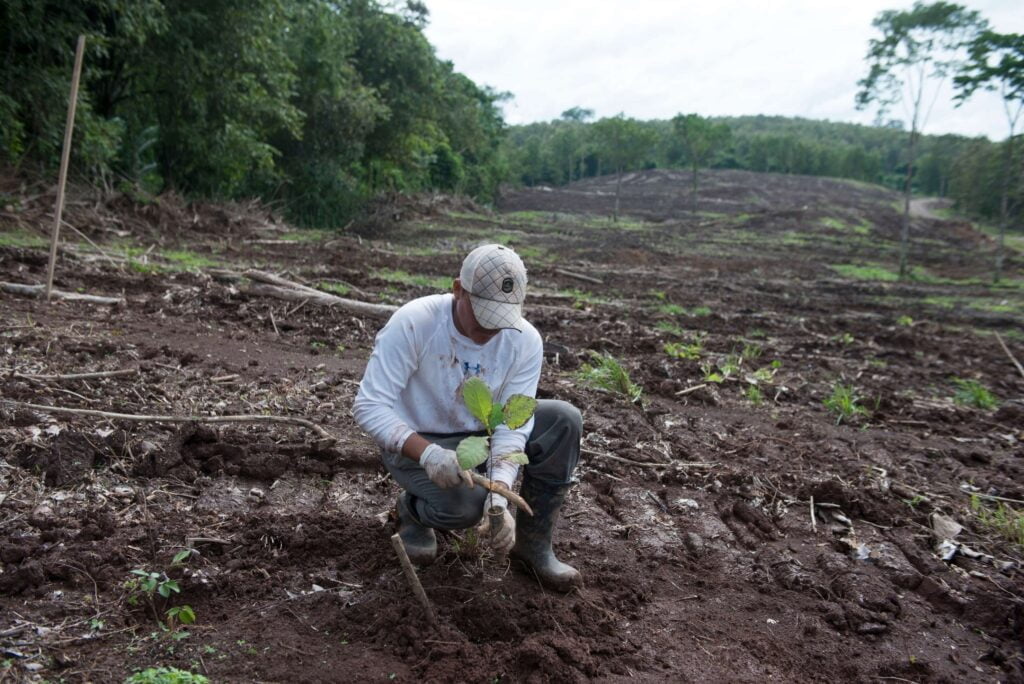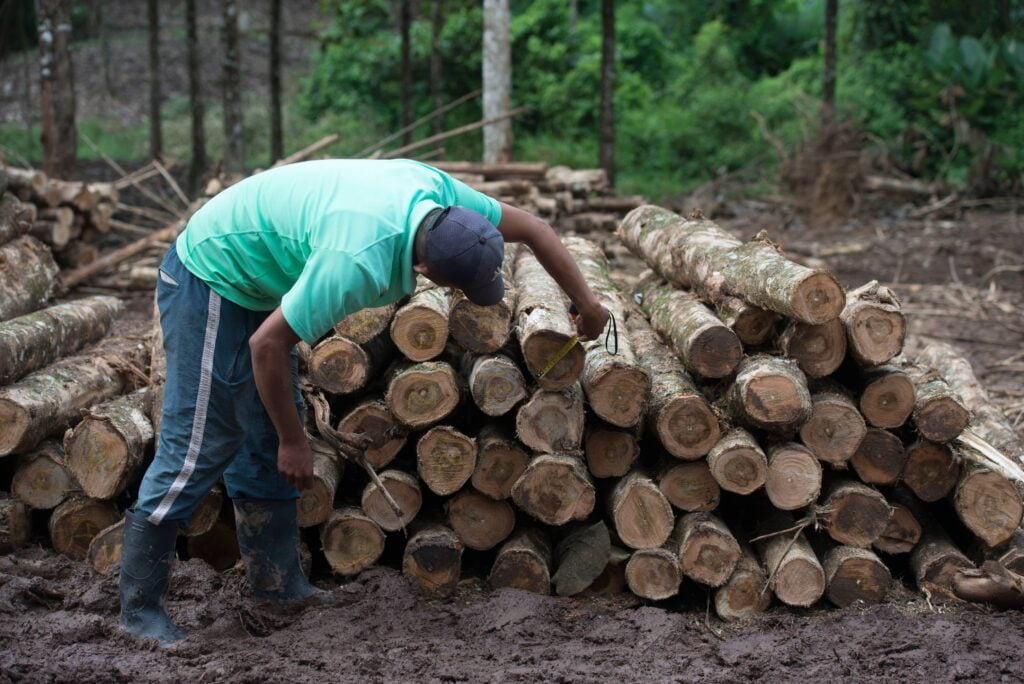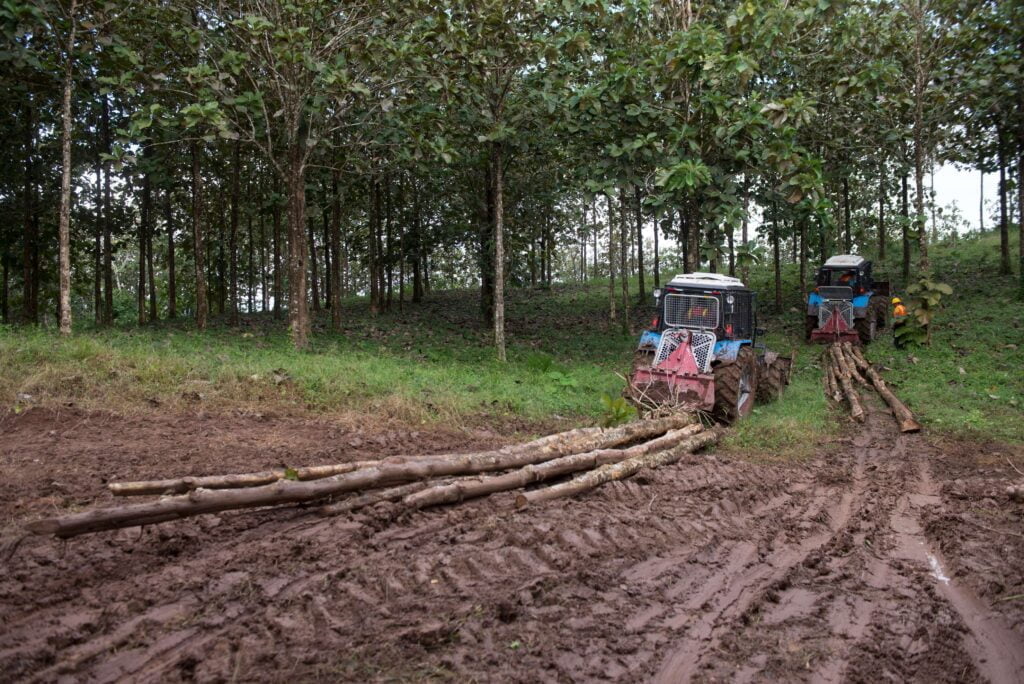News
Finca San Miguel of MLR Forestal: from devastated land to a green future

The blow of hurricanes Eta and Iota in November 2020 devastated the eighty hectares of forest plantations of the San Miguel farm of MLR Forestal. This farm, located in the community of the same name in the rural area of Siuna, is currently a symbol of resilience, teamwork and faith in the future; because despite the fact that the hurricanes knocked down or damaged the young teak trees, the MLR Forestal will raise the plantation again.
From the small multigrade school in the San Miguel community, men and machines can be seen at work. They are lifting and grouping the last fallen tree trunks. Not a single one is left standing and the ground is full of stubble. The March sun falls harshly, but Miguel Jarquín is happy about the latter.
Hard work benefited by the sun
Miguel Jarquín is supervisor of the forest exploitation area of MLR Forestal. He mentions several times the phrase “time has allowed” because here in Siuna, the weather is changeable and, although it is not the rainy season, suddenly the rain surprises. And that, the rain, would slow down the work of Miguel and his team.
“The weather has allowed us to have advanced sixty percent. Right now we already have between 180 and 200 cubic meters surrounded and lying down. If everything continues the same in terms of weather, we could have completed one hundred percent by the end of March.”
The wood that is being used in San Miguel was very young. The teak trees from which it comes were only planted in 2016, however it is completely suitable for processing at the company’s sawmill. Twenty people are involved in the task of removing it from San Miguel and taking it to the industry area: 15 chainsaw operators, four assistants and a supervisor. In addition to four machines and two loader trucks that take an hour to go to and from the sawmill.

The road to a new plantation
“Once the wood is extracted, we enter to rehabilitate the land. This means giving conditions to the place to carry out the future plantation”, who explains it is Santiago Almeida, head of the forestry area of MLR Forestal.
“If we have a lot of wood, we chip it with a chainsaw or machete and then we make the marking or planting box. Then we make a planting crown, that is, the place where the plant is going to go, which is left completely clean in a circumference of one meter in diameter. The next step is to establish the plantation, which the idea is to do by the beginning of May with the arrival of the rains,” Almeida points out.
According to Almeida’s calculations, it would take a month to do all the rehabilitation and replanting work in San Miguel and about fifteen people per day would be needed in the different activities. 500 plants per hectare would be planted on the farm, which would guarantee the recovery of the greenery that the hurricanes took away.

Forest plantations and their importance for forests
Although forest plantations are not natural forests , it can be said that it is an economic activity that is not only friendly to the environment; but by its mere existence helps to improve it.
According to the EFI English publication “Forest plantations in Europe: challenges and opportunities”: “In many regions, land use mosaics incorporating forest plantations are very effective in enhancing ecological integrity and addressing climate and environmental challenges. Forest plantations are often an important component of landscape-scale restoration; and they can put degraded lands back into production and improve the provision of ecosystem services ”.
“If managed well, forest plantations have the potential to sustainably supply a substantial proportion of the goods and services that society requires and thus allow other forest areas to be managed for conservation and protection purposes.”
Some benefits of forest plantations are:
- They protect the biodiversity of the area and serve as biological corridors that help protection zones
- By generating wood for local and national consumption, they take pressure off protected areas as it reduces the market for buying wood from the forest for multiple wood applications.
- They generate various enterprises and industries that would increase the possibilities of work in the area.
- They fight desertification and improve the quality of water and rivers
- They significantly help to combat the greenhouse effect by fixing carbon dioxide, this helps not only the country but also protects from climate change, whose effects we suffer year after year and intensify, as we can see with Hurricanes becoming stronger and stronger.
- Enhance the landscape effect
Share




